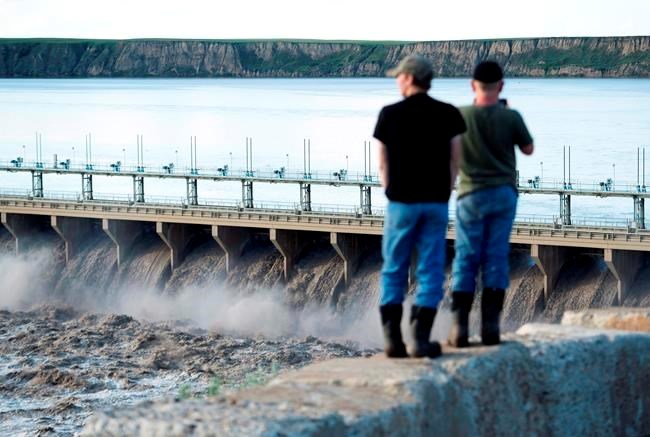Alberta's irrigation district managers are proposing a $5-billion plan for water storage and conservation in the province's south as the region faces increasingly tight supplies of the vital resource.
"Water is so variable," said Margo Redelback of the Alberta Irrigation Districts Association, which commissioned the report containing the recommendations.
"Climate change is going to make that more variable, so it's important for us to be thinking about what we should consider."
The report focuses on the South Saskatchewan River basin, which covers most of southern Alberta and includes other major rivers such as the Bow, the Red Deer and the Oldman. It's home to 1.8 million people, as well as almost all of the province's irrigated farms and major water users like beef processing plants.
The report, which brought together 40 different organizations to reach its recommendations, looked at the fate of those rivers as climate change continues to move Alberta into a hotter, drier era.
With the exception of extreme scenarios in which glaciers no longer feed the basin, Redelback said southern Alberta will continue to have enough water. But it will probably come at different times of the year, or will drain away as runoff instead of being released slowly by melting ice or snow.
Under all scenarios of warming, end-of-summer water flows are projected to be lower. That comes as the region's population is expected to grow.
"It's really about timing," Redelback said. "We're going to have more variable water falling.
"For that reason, there's large potential storage projects that could be considered."
The report proposes eight projects that would either improve and expand existing reservoirs or build new ones, for a total of about $5 billion.
The two most expensive, at an estimated $1.5 billion each, would be new dams and reservoirs for the Bow River near Brooks in the southeast and the Red Deer River near the central Alberta city of Red Deer. The province has already committed about $10 million to study those projects.
The report proposes a 20-year timeline for realization of all its proposals.
The report also proposes the construction and preservation of wetlands, which in addition to providing wildlife habitat and carbon storage, store water and slow it down before it runs off.
Redelback acknowledged the projects will have to be managed carefully to keep enough water in rivers and streams for environmental needs.
"There's probably some challenges in some places with some instream flow objectives. If you have careful operating objectives, they could be overcome."
The storage projects, if built, would probably mean less water flowing downstream to Saskatchewan — although Redelback said Alberta's legal requirements would continue to be met.
The report says the projects could generate up to $6 billion in economic activity.
It doesn't mention interbasin water transfer, mentioned by Alberta Environment Minister Rebecca Schulz, or the entry into the basin of thirsty new industries such as coal mining.
Paul McLauchlin of Rural Municipalities Alberta, whose group wasn't involved in the report, said the document is the first he's seen that incorporates climate projections into water planning.
"(The report) isn't pulling any punches but it's providing a path forward," he said. "In an uncertain world, you want some certainty."
He said other river basins in the province should receive the same treatment.
Redelback said the report is meant to fuel discussion and provide guidance to government.
This report by The Canadian Press was first published April 5, 2024.
Bob Weber, The Canadian Press



